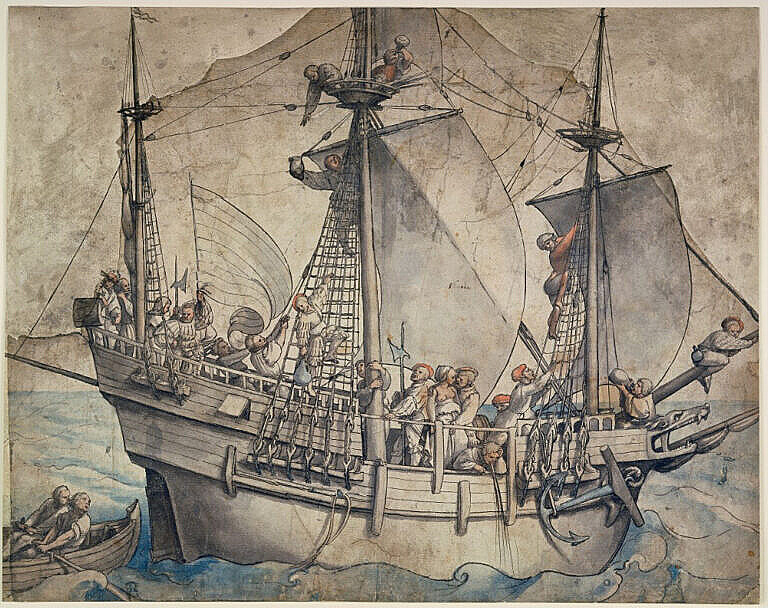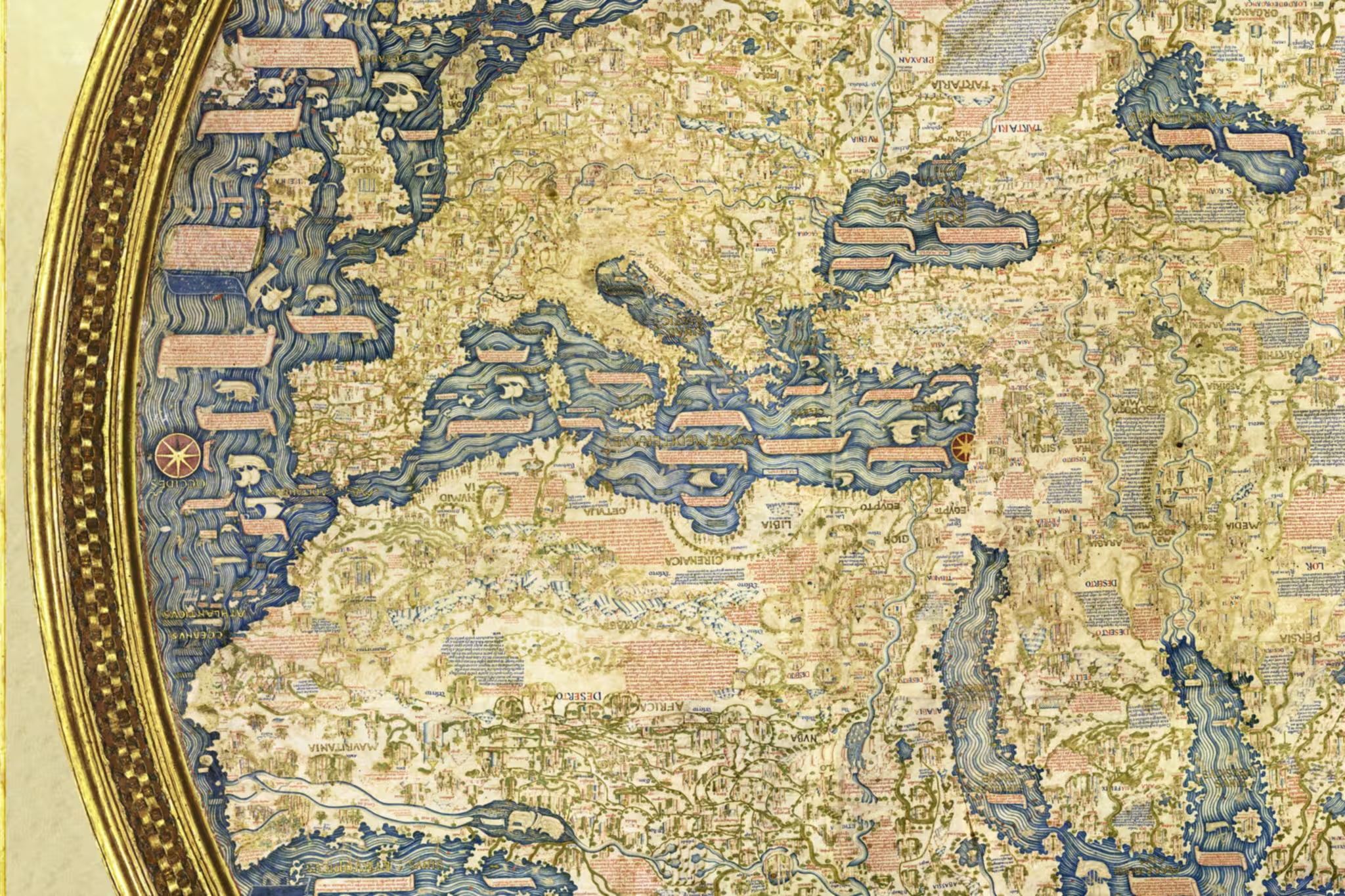Venice was for a very long time wealthy. It was probably one of the riches cities in the world.
From the earliest times the city’s merchants picked up the sea trade between the Levant (current day Middle East) and Western Europe when the Western Roman Empire collapsed, and they made good money on that trade for almost a millennium.
That wealth build and bought most of what we see in Venice today.
Venice occupied a role in European long-distance trade like Rotterdam does today. It was the point of entry for a huge quantity of goods from all the known world.
The main reason for this mercantile success was geography. When geography changed, the fortunes of Venice changed. Venice got less rich.
The Known World
The world the Venetians traded in was, until the end of the 15th century, very different from ours.

Living in the lagoon made Venice a nation of sailors and merchants. The Venetians therefore travelled mostly by sea.
They knew most of Europe, all of the Mediterranean basin and the Black Sea. They travelled as far as Scandinavia along the Atlantic coast, and to Crimea and the Sea of Azov across the Black Sea.
Through the merchants they traded with, the Venetians got some ideas about where the goods came from.
In the harbours of the Levant and the Black Sea they learned about Eastern Europe, Eurasia and the Caucasus through the Black Sea, about China (silk), Central Asia (cotton) and Persia through the Silk Road, and Arabia (coffee), India (spices), and Eastern and Sub-Saharan Africa (spices, tropical hardwood, slaves).
Notably absent from this world are the Americas, much of Western and Southern Africa, Antarctica and Australia.
Trade Patterns
Europe imported the luxury goods it couldn’t produce on its own, from Eurasia, Asia or Africa.
Sea transport is far more efficient than transport over land, so sea and river trade routes were the most important for long-distance trade.
Goods travelled from Central Africa down the Nile to Alexandria. From Madagascar and from all the east African coast, products travelled north to the Red Sea and onwards to Alexandria or Palestine. Merchandise from India and Persia arrived in Syria through the Euphrates and Tigris rivers. From Eastern Europe, Eurasia and the Caucasus the goods travelled on the main rivers, like the Volga and the Dnieper, to the Black Sea.
The most important land-based trade route was the Silk Road, which brought silk from China and cotton from Central Asia to the Mediterranean or the Black Sea coast by caravan.
All these trade routed converged on the Eastern Mediterranean. This was, for millennia, the main trade hub connecting Eurasia, Asia near and far, the Indian subcontinent, Arabia and Easter Africa with Central and Western Europe.
It is not a coincidence that many civilisations developed exactly in this area.
The Eastern Mediterranean was where the money were, until the expansion of the Ottoman Empire and the Age of Discovery.
A Geographical Advantage
All the major seafaring nations in Europe tried to get in on the game in the Eastern Mediterranean. There were a lot of money to be made.
The city states on the Italian peninsula had a favourable position, and to a lesser extent also cities like Marseilles and Barcelona.
Venice in particular was very lucky.
Medieval seafaring was dangerous, and the bottom of the Mediterranean is dotted with shipwrecks. Storms, piracy, plague, war or just plain bad luck or incompetence could lose a ship with its crew and cargo.

The common merchant ships of the period, such as caravels and carracks, were rather small, about 25-35m long.
Sailing was slow. The ships depended on the wind. A journey from Venice to Alexandria could take a month, and the return journey often twice that. Most ships couldn’t bring provisions for that long, due to limited space in the hold, so they had to do frequent stops for reprovisioning.
Ships from cities in the Western Mediterranean had to cross the open sea to get to the Eastern Mediterranean. That meant fewer and more distant good harbours for reprovisioning, and a higher risk of severe storms.
From Venice the journey was through the Adriatic Sea, which is narrow and more sheltered. That meant a lesser risk of severe conditions and a higher chance of finding a safe place to sit out a storm. The eastern coast of the Adriatic has numerous good harbours, which Venice took control of very early.
Furthermore, the Adriatic Sea has the perfect orientation NW-SE to travel from somewhere close to the Western European markets to the Eastern Mediterranean.
An Economic Advantage
All in all, the geography meant that Venice would lose fewer ships in transit than their competitors further west. Fewer ships lost means less money lost, and hence an economic advantage.
So Venice got rich, or rather richer than other cities because geography gave the merchants of the city a competitive edge.
The Venetian merchants could get the goods to market in Western Europe with slightly less loss, and there at a slightly lower price.
That competitive edge disappeared in the late 15th century.




Leave a Reply